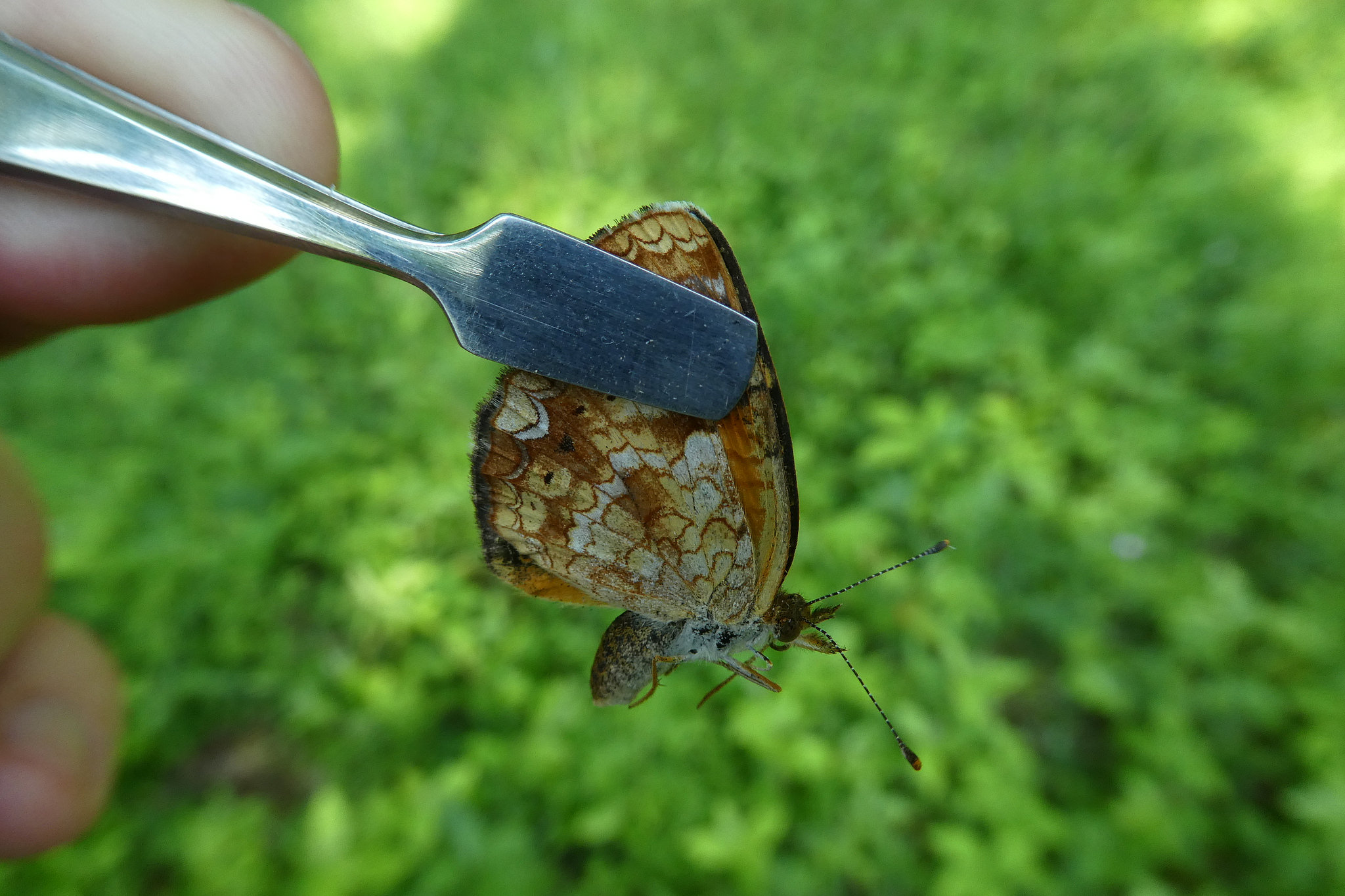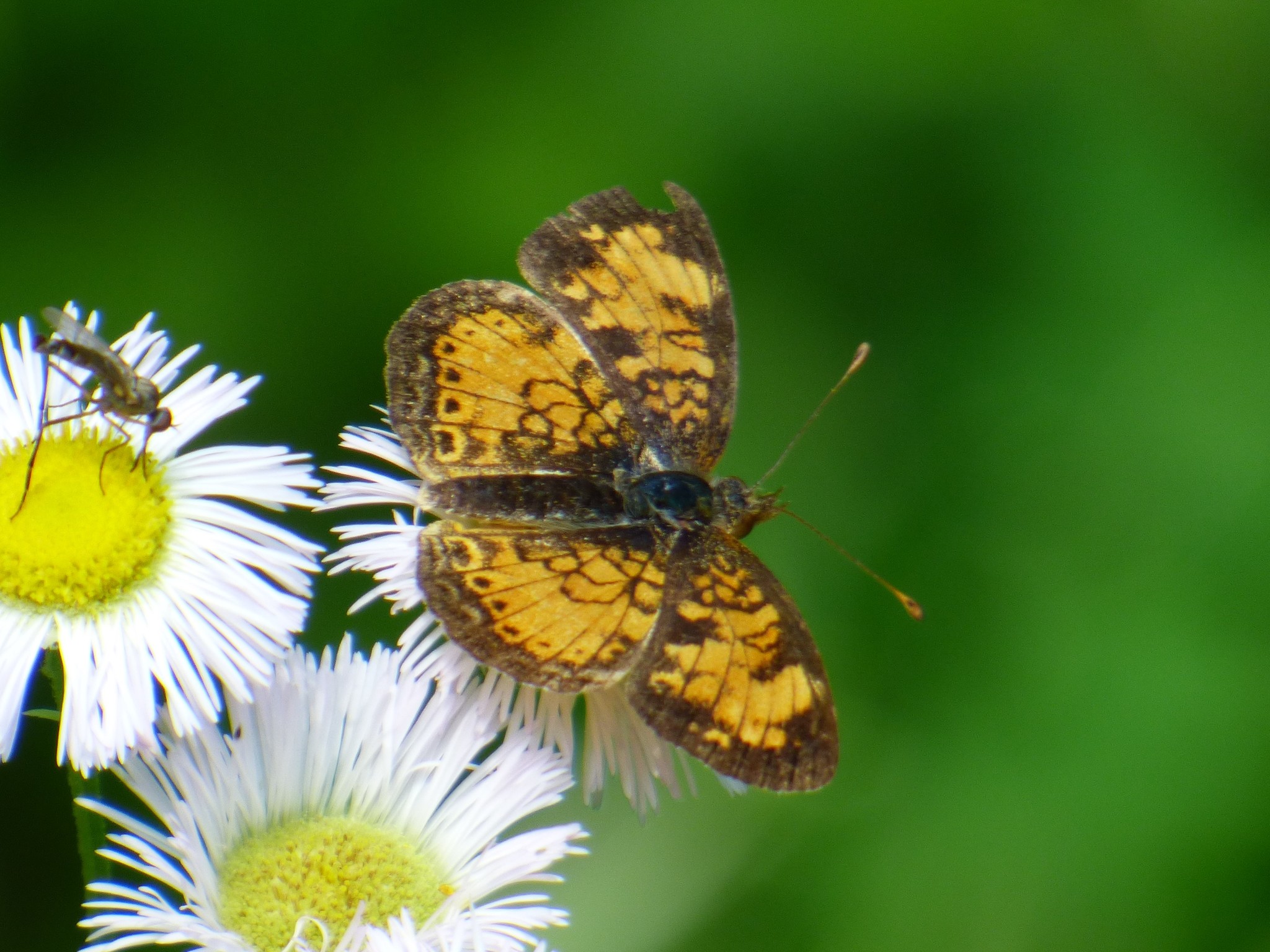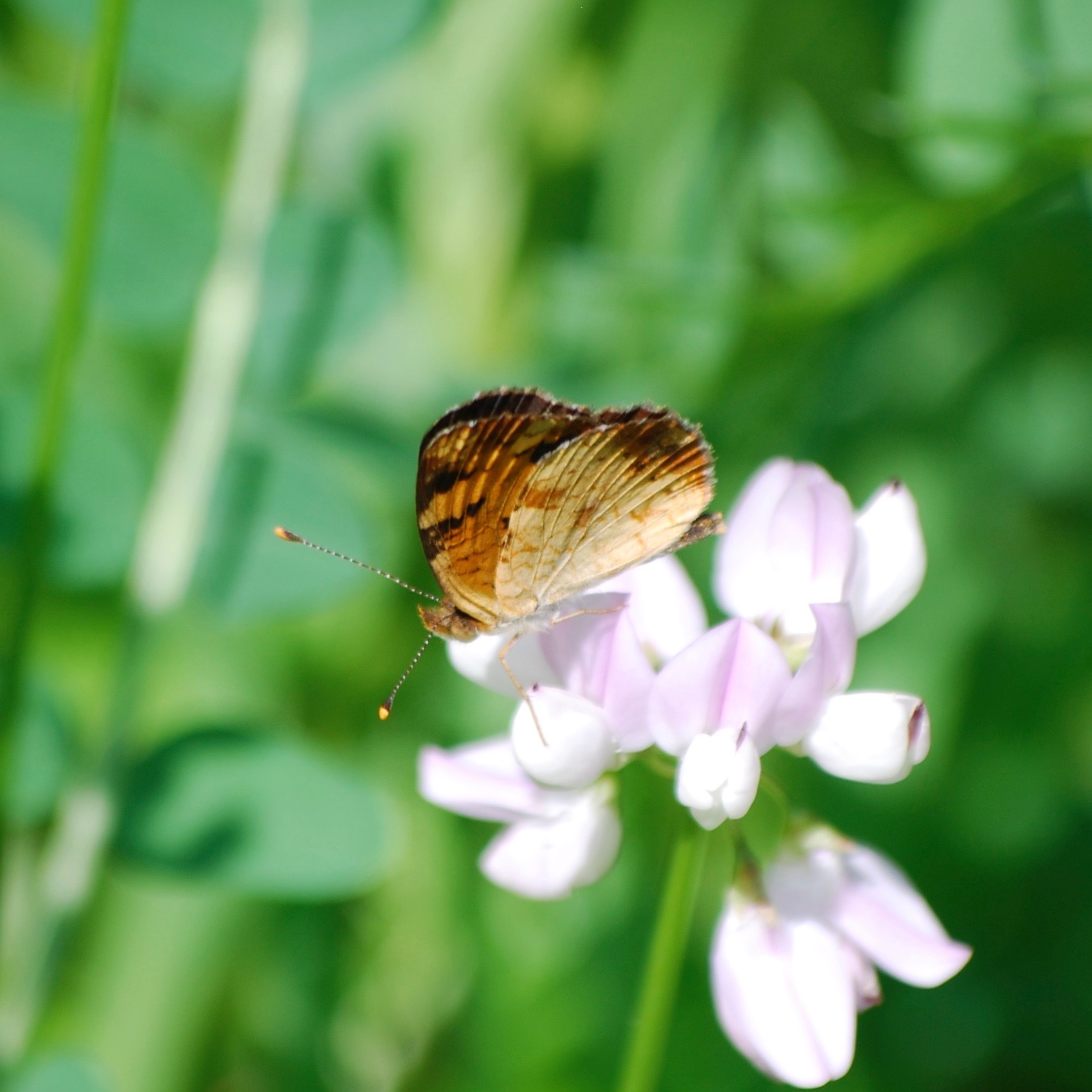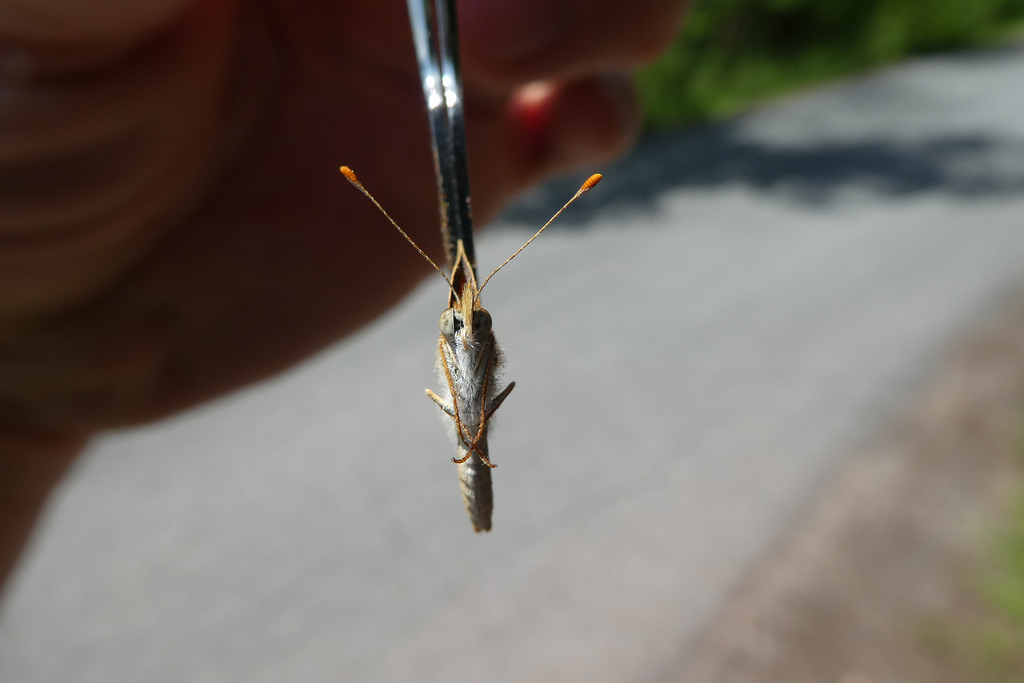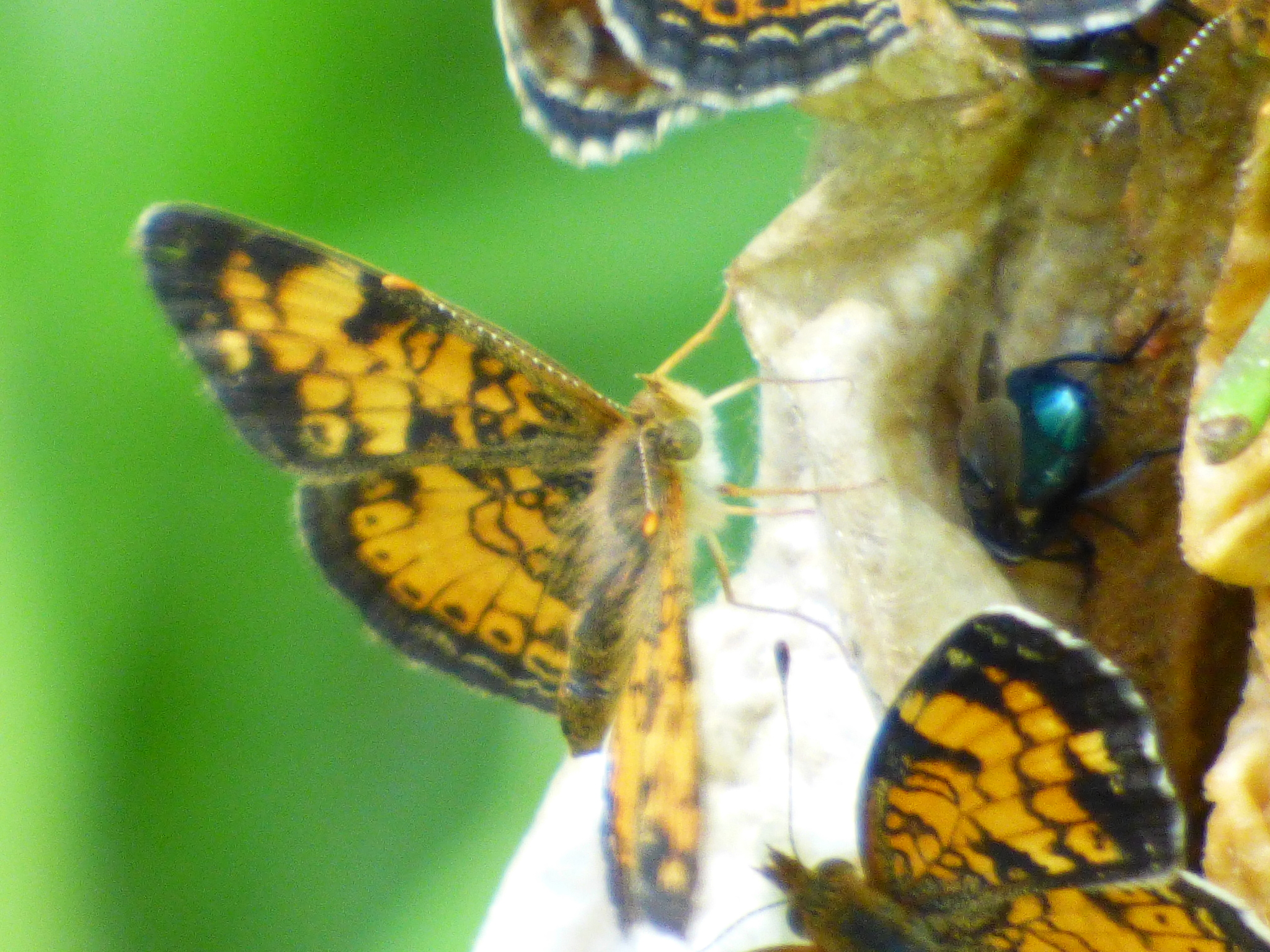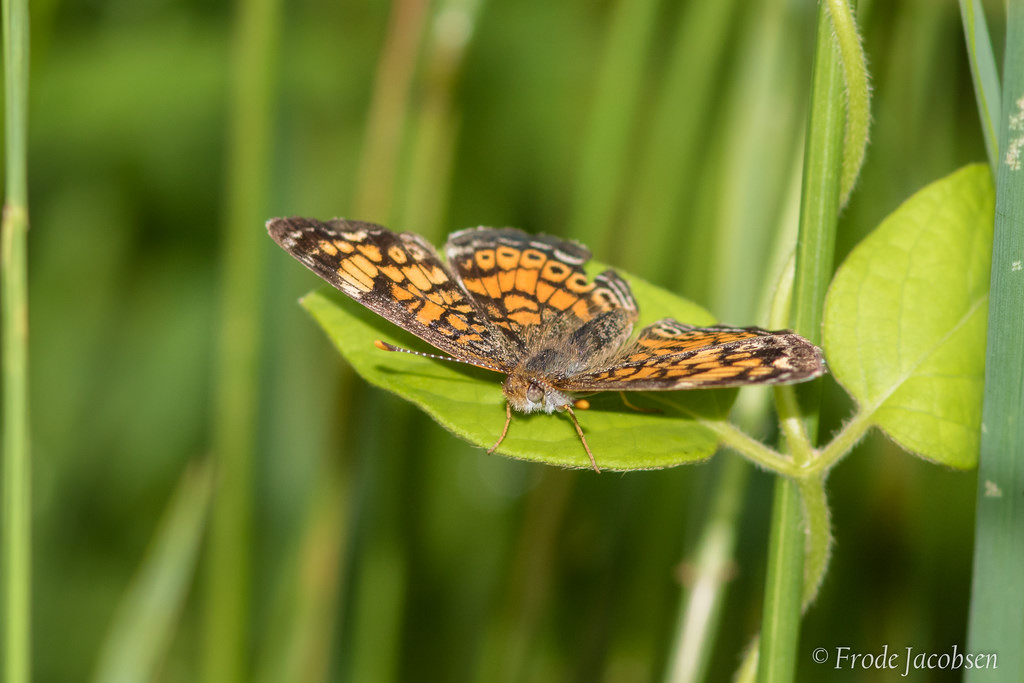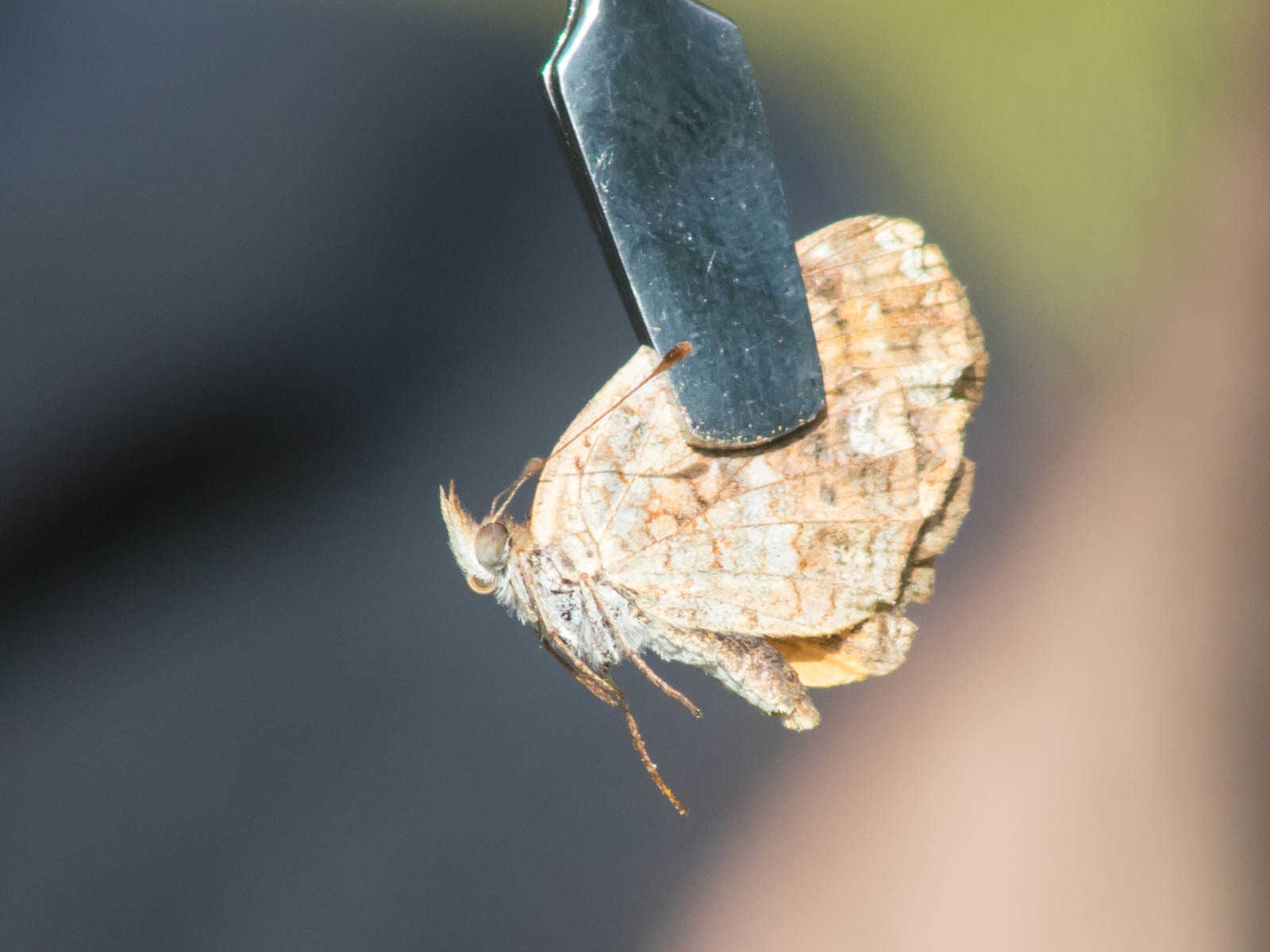Map Snapshot




8 Records
Status
Although Northern Crescent (Phyciodes cocyta) and Pearl Crescent (Phyciodes tharos) have been known as separate taxa since their respective descriptions at the time of American independence from Britain, it has only been in the last three decades that the taxonomy of the cocyta-tharos crescents has come into focus. Until relatively recently, it was assumed that crescents in Maryland were uniformly Pearl Crescents. Distinguishing tharos from cocyta is a very difficult proposition in the field or from photos, requiring close examination of the scaleless underside of the male antennal club tip which in cocyta is bright orange. Proper viewing of this diagnostic characteristic is almost impossible from photographs and normally requires the specimen to be examined in hand; females are identified by association with males and their habitat. There appear to be two taxa in what we now call Northern Crescent (the cocyta group) in Maryland. One is a bivoltine large crescent that flies from mid-May to mid-June and again in late summer (flight times have not yet been established conclusively in Maryland), effectively between broods of the more common Pearl Crescent. The second cocyta group taxon appears to be univoltine and flies in midsummer. Habitat-wise, Pearl Crescent is a butterfly of fields and weedy areas, much drier habitat than the favored habitat for both cocyta group species, which favor wet meadows, streamsides, and damp, grassy woods margins. Both of the cocyta group taxa in Maryland are residents only of the western part of the state, from Frederick Co. westward, and are absent from most of the Piedmont and the Coastal Plain where tharos is abundant. The females of both taxa average a third again larger than female tharos, approaching in some cases the size of Harris's Checkerspot. (R. Borchelt, pers. comm.)
Description
See above. Compare more common and widespread Pearl Crescent.
Relationships
Uses various asters as larval hosts.
Seasonality Snapshot
Source: Wikipedia
| Northern crescent | |
|---|---|

| |
| Scientific classification | |
| Domain: | Eukaryota |
| Kingdom: | Animalia |
| Phylum: | Arthropoda |
| Class: | Insecta |
| Order: | Lepidoptera |
| Family: | Nymphalidae |
| Genus: | Phyciodes |
| Species: | P. cocyta
|
| Binomial name | |
| Phyciodes cocyta (Cramer, [1777])
| |
| Synonyms | |
| |


Phyciodes cocyta, the northern crescent, is a butterfly of the family Nymphalidae. It is found in the Nearctic realm.
The wingspan is 32–38 mm. The butterfly flies from June to July depending on the location. Its habitats include fields, meadows, glades, and openings in woodlands.[1]
The larvae feed on Asteraceae species. Adults feed on nectar from dogbane, fleabane, and white clover.[1]
Similar species
[edit]- Phyciodes batesii – tawny crescent
- Phyciodes tharos – pearl crescent
References
[edit]- ^ a b "NatureServe Explorer 2.0". explorer.natureserve.org. Retrieved 2022-02-23.
External links
[edit]- Butterflies and Moths of North America
- Northern crescent, Butterflies of Canada
